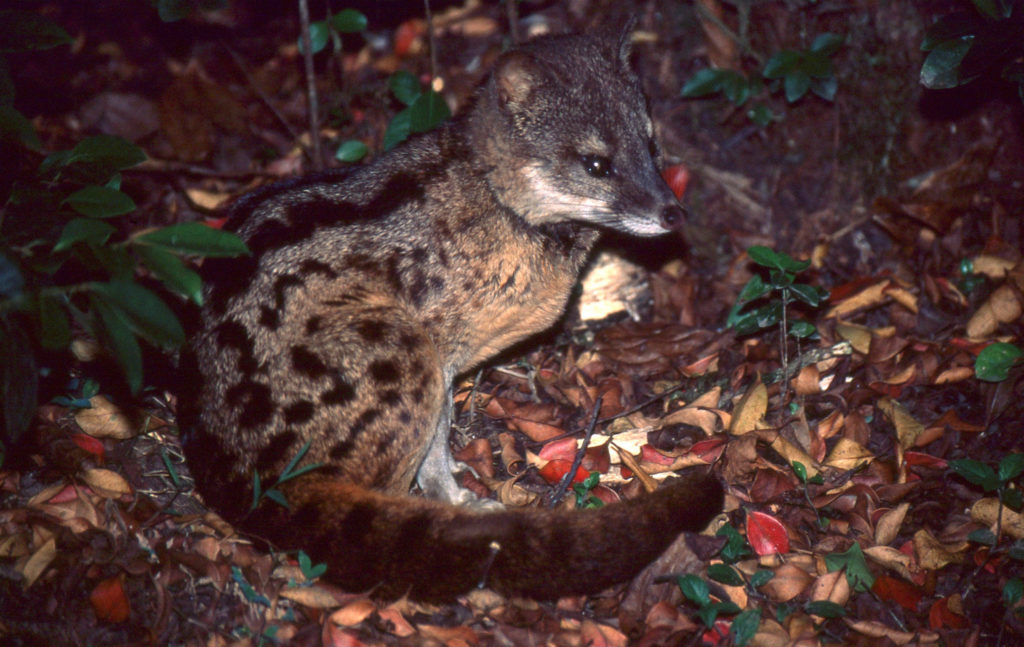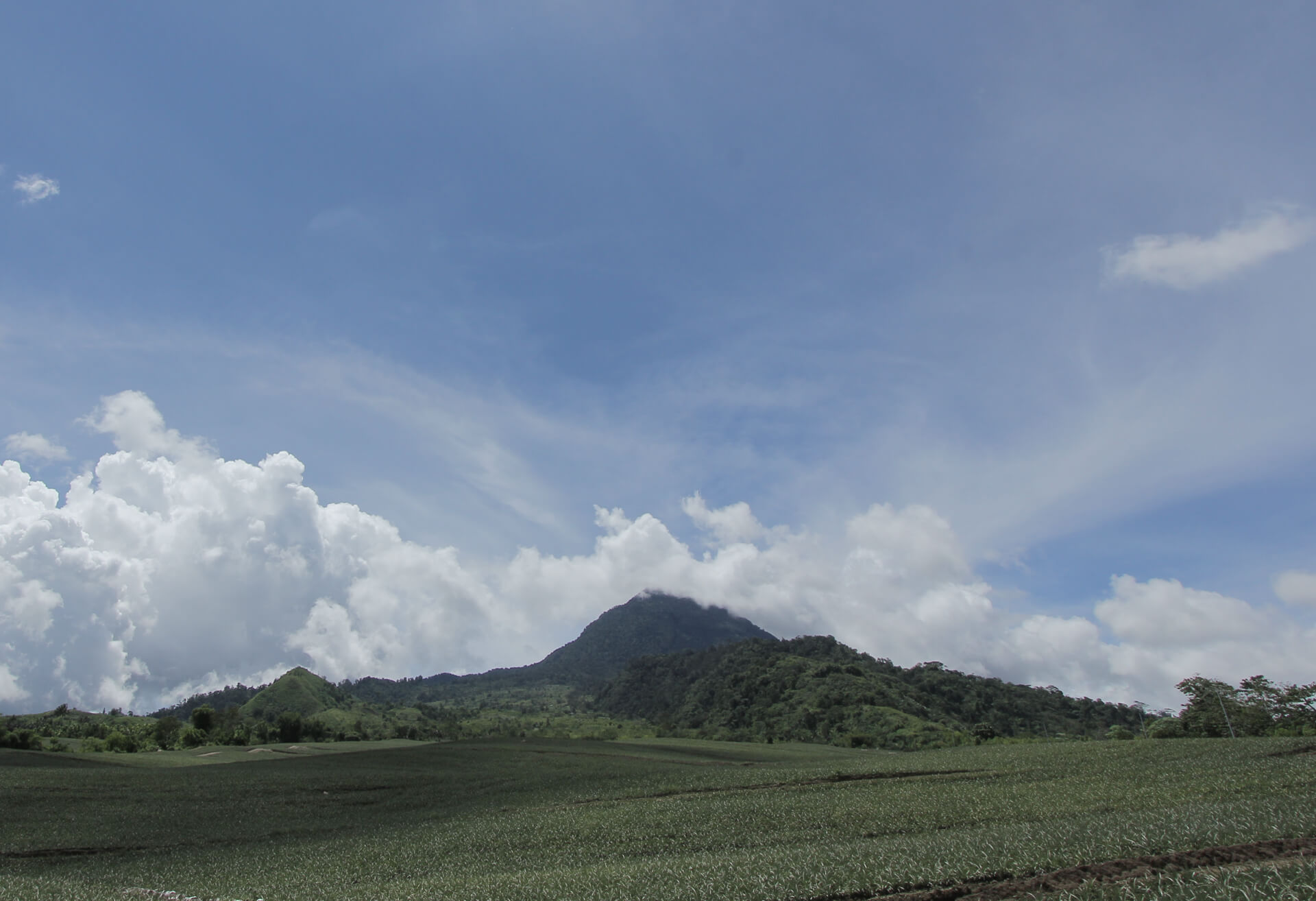What is a Civet Cat?
The term Civet Cat is commonly used to describe the Asian Palm Civet (Paradoxurus hermaphroditus). As a member of the Viverridae family, this Viverrid is closely related to African Civets, Linsangs, and Genets.
Natural habitats of Civet Cats include the tropical forests, plantations, and orchards of South and Southeast Asia. In these regions, they are often referred to as the “Toddy Cat”.
They like to stay in trees and high places, hiding during the day and roaming around the forest floor during the night. People who are not familiar with what a Viverrid is, often refer to them as Civet Cats, this is because it looks a bit similar to a cat. Another reason, why they are called Civet Cats, is that they will hiss and spit like cats if they feel threatened.
Civet Cats are distributed around South Asia and Southeast Asia. They are native in India, Bangladesh, Myanmar (Burma), Thailand, Malaysia, Vietnam, and of course Indonesia and Papua New Guinea.
Different types of civets (belonging to different genera) can also be found in Sri Lanka and Sub-Saharan Africa.
Civet Life
An pregnant Asian palm civet usually gives birth to two or three toddy cats each pregnancy. As soon as they are born a, civet is able to crawl. Usually, they can walk by the fifth day. For the first six weeks of their lives, they live off their mothers’ milk. Their lifespan can be up to 20 years. If kept in captivity, their lifespan can be longer.
The Civet Cat is a nocturnally active species, and is therefore rarely seen during the day. They usually become active between 6 pm and 4 am; with their activity period strongly influenced by the lack of light. They are excellent climbers and spend most of their lives in trees. They like to choose the highest trees in the forest to stay. This is where they spend most of the time during the night and the whole time when the sun is up.
Civets repeatedly sleep in the same trees, if they stay in the same area, but they don’t build nests or similar as the top of the trees are their hideouts. During the night, they like to roam around the forest floor in search of food.
What does a Civet Cat Eat?
Civets are omnivores, which means they can eat anything. Mostly they eat berries and pulpy fruits, small insects, and seeds. These animals are infamous for eating ripe coffee cherries (for their sweet fruit flesh). The beans that they pass once the coffee cherries have been eaten is often collected and sold for its unique flavour. The name of the coffee produced is “Kopi Luwak” or “Civet Coffee”. The digestive processes in the civets helps to break down proteins found in the coffee beans; this removes the bitterness from the coffee bean and enhances the flavor of the coffee. This exquisite flavour has made Kopi Luwak a popular coffee option around the world.
Physical features of Civet Cats
Civet Cats usually weigh from 4 to 11 pounds and are usually 40–70 cm long. They have a long slim body and short feet. They have dark rings around the eyes, their nose is small and pointy, as are their ears. Fur is greyish to brown, with some lighter spots. The fur in the belly area is a lot lighter compared to the rest of the body.
Civets secrete a liquid which is very sweet and pleasant smelling, this has led to some locals traditionally hunting the animals to harvest the secretion.
For a more scientific explanation about the Asian palm civet cat, also known as musang, please visit this page: https://kopiluwakdirect.com/asian-palm-civet/
Civet Facts:
Here are some Facts about Civets
- Civets are active at night
- Civets are mammals
- Diet of Civets: They are omnivores. Their primarily eat pulpy fruits and berries.
- Asian Civet cats are native to India, Bangladesh, The Philippines, Sumatra and Java, southern China, and Myanmar.
- When they are threatened they hiss and spit like cats.
- Civets can live up to 22 years.
Civet Cat Coffee
In countries such as Vietnam, The Philippines, and Indonesia, coffee beans that have been eaten and passed out by civets are highly valued.
Following digestion and passage through the civet cats, the beans are collected from the forest floor. Coffee beans of high quality are cleaned, processed, and roasted. They then end up in homes around the world as Kopi Luwak, and are sometimes referred to as cat beans.
Civet Cat Coffee is popular around the world because the wild cat-like-creatures choose only to eat the best smelling and therefore ripest, sweetest, and best coffee cherries. The sweetness of the cherries comes from the fruit sugar found in the fruit flesh of ripe coffee beans.
When the Civet Cat eats the coffee cherries, proteolytic enzymes in the stomach of the animal catalyze the break down of protein present in the coffee beans. This protein is one of the main reasons that coffee beans have a bitter taste. Through this process, the resultant coffee tastes very mild, smooth, and complex, without any bitterness.
Threats to Civets
Although this species is under threatened status, many farmers are still hunting and killing them. This is because they are often seen as pests for plantations and orchards. The education of the local population is the main priority for the preservation of the species; we are working hard to make this knowledge spread.
What should we do when we see a civet?
If you see a civet get out your camera and take a picture, they are very photogenic. or as they are nocturnal make sure you have your touch with you!
However, civets are very shy and not used to be in contact with humans, therefore they can be very rarely be seen.
Civets used to be seen as pests. Since Kopi Luwak has become popular it has helped with the preservation of the civet cat population in the region – now fauna is flourishing and nature is in balance.
Commonly asked questions:
Is a civet a cat?
No, a Civet belongs to the species of Asian Palm Civet. It is actually a small viverrid and has no relation to the cat family (Felidae).
What does the diet of a civet look like?
As Civets are omnivores they will eat almost anything that they can sink their teeth into. Typically a Civet diet consists of pulpy fruits and berries, supplemented with seeds and insects.
Do civets drink milk?
Since they can eat anything, they can also drink milk, but it’s not very common. As a mammal the young consume milk during the first six weeks of their lives.
Due to its unique flavor and great story behind it, Civet Coffee coffee is becoming more popular around the world, whether it be for personal private consumption, or used in exclusive hotels and coffee shops. If you’re interested in becoming a reseller, please contact us directly via email at support@kopiluwakdirect.com.
If you’d like to buy our exclusive Wild Civet Coffee, please go to our homepage and complete your purchase or click here.

